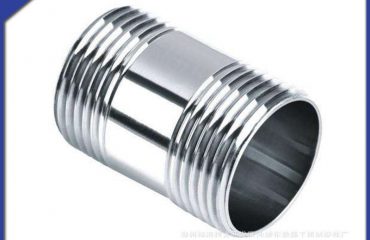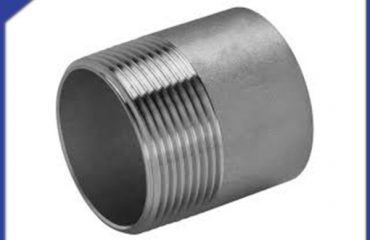
In order to improve the corrosion resistance and decoration of large stainless steel flanges, it is necessary to polish the stainless steel surface. Now, there are three polishing and electrochemical polishing technologies, including mechanics, mechanics and chemistry. Because of the use of phosphoric acid and chromic anhydride in the existing stainless steel electropolishing liquid, many chromium (VI) and phosphoric acid roots are discharged in the process of polishing and cleaning, which constitute environmental pollution. After experiments, the following formulations and technological conditions are recommended. 123 H3PO4 (%) 40–50 20–30 H2SO4 (%) 15–20 20–30 HNO3 (%) 10–15 perchloric acid (%) 8–10 glacial acetic acid (%) residue H2O residue additive amount additive appropriate dextrin appropriate glycerol A additive a few t © 60-
The chemical polishing of large stainless steel flanges is caused by regular dissolution of flanged surfaces. In the process of chemical polishing, the surface of large stainless steel flanges is continuously formed by passivation oxide film and oxide film, and the former is stronger than the latter. Because of the microcosmic inconsistency of the large stainless steel flanges, the microscopic convex parts of the outer surfaces dissolve first and the dissolution rate is greater than the dissolution rate at the concave parts; and the dissolution of the film and the composition of the film are always carried out together, but the rate is different, and the results make the roughness of the carbon steel flanges of large stainless steel flattened. A smooth and bright appearance. Polishing can fill surface pores, scratches and other surface defects, and then improve fatigue resistance and corrosion resistance.
Electrochemical polishing is also called electrolytic polishing. Electrolytic polishing is made of large stainless steel flanges as anode, insoluble metal as cathode, and immersed into electrolytic cell with the north and south poles together, and selective anodic dissolution occurs through direct current. Then, the light degree of large stainless steel flange is increased to reach the mirror surface. The formula of environment-friendly electro polishing solution 1 and 2 do not need chromic anhydride, and the amount of phosphoric acid is less. This formula reduces the pollution discharge. The formula completely does not need phosphoric acid and chromic anhydride to deal with the environmental problems of wastewater discharge. It is a new and pollution-free environment-friendly electrochemical polishing agent. Its technological process, such as process conditions and the original conditions are the same, the polishing effect is basically the same, ensuring the quality of polishing. In the production process, the appearance of stainless steel is simple, showing some black oxide scale or microscopic inequality, which affects its application value. As long as its reprocessing, such as mechanical polishing, chemical polishing and electropolishing, is used to improve its value, it is recommended that the following processes or permits have a good effect.
 Language
Language Espanol
Espanol English
English Italian
Italian عربى
عربى
 Skype: chinamaker99
Skype: chinamaker99  Tel: 86-316-5120812
Tel: 86-316-5120812 Email:
Email:  Whatsapp:
Whatsapp: 
